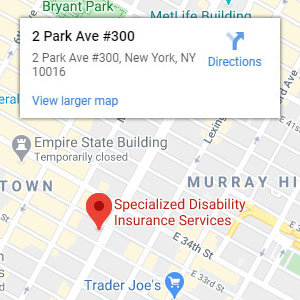Purchasing disability insurance policy can be daunting. Physicians commonly have the following concerns:
- Can my coverage be taken away, modified, or can my rates increase?
- What classifies me as being disabled?
- What if I can still work as a physician, but I’m making less money?
- Can I increase coverage, or will I need a new policy as income increase?
- Are there optional benefits to consider?
- When will the insurance company start and stop paying me?
The key points physicians should understand when looking to obtain disability insurance coverage are outlined below:
Q: Can my coverage be taken away, modified, or can my rates increase?
Non-cancellable guaranteed renewable:
Non-cancellable guaranteed renewable means that your policy provisions and rates cannot be changed if your premiums are paid. Once coverage is properly established, it cannot be cancelled by the carrier, the terms cannot be changed, rates cannot be changed, future exclusions or pre-existing conditions cannot be added.
Pro tip: Some carriers have this automatically included in their contract and other carriers require this to be added as a rider. Our advice is to make sure to have this benefit included. This provides peace of mind knowing that your contract is “grandfathered in”.
Q: What classifies me as being disabled?
Own-occupation:
An Own-occupation clause applies to the definition for total disability. This means that if you cannot perform the material and substantial duties of your profession/specialty, you can collect full benefits, without limitation, even if you work in another occupation. For example, a surgeon develops an arthritic condition and can no longer do his/her job. The policy will pay full benefits even if he/she decides to work in another career.
Pro tip: Some carriers have this built into their policy, while other carriers require you to add it as a rider. Some carriers can use confusing language such as “medical occupation definition”, but it may not be a true own occupation contract. We recommend that all physicians have an own-occupation definition when available. This feature provides flexibility and does not limit you from your potential.
Q: What if I can still work as a physician, but I’m making less money?
Residual/Partial disability:
A partial or residual benefit can provide coverage if you still working in your occupation, but as a result of injury or illness, your income has decreased. Benefits usually begin after a 15% or 20% decrease in earnings. The insurance carrier will often pay the same percentage of your benefit as the percentage loss of your income.
Pro tip: This is one of the most important benefits for a physician as it allows them to continue working in their field without a financial loss. The Residual/Partial rider should not be overlooked.
Q: Can I increase coverage, or will I need a new policy as income increase?
Future increase option:
This feature allows you to increase your benefit, as your income increases, without future medical underwriting. This means if you lock in a policy while you’re young and healthy, you can reserve the right to increase it later, regardless of any changes in health.
Pro tip: We highly recommend this option. Our is advice is to design coverage to lock in you for as much as you can. A healthy young physician can lock in the ability to increase coverage up to a $20,000 – $35,000 monthly benefit in the future. Some carriers provide this benefit at no additional cost.
Q: Are there optional benefits to consider?
Optional benefits:
Cost of living adjustment (COLA): This benefit is designed to protect you against inflation during a claim by increasing your monthly benefit while disabled, by a fixed percentage or based on changes to the CPI.
Catastrophic rider: This benefit pays out an additional amount for a more severe claim that would often result in increased expenses.
Student loan rider: Provides an extra payout to help repay your student loans.
Retirement protection: A benefit that will fund a trust account while receiving total disability benefits. It is designed to allow you to continue funding your retirement and building assets while disabled.
Q: When will the insurance company start and stop paying me?
Elimination period & Benefit period:
Elimination period: Is the amount of time one needs to be out of work, or with a loss of income, due to injury or illness, before they can receive benefits. Options include 30 days, 60 days, 90 days, 180 days or 365 days.
Benefit period: Is the maximum duration a claim can be paid. Options include, 2 years, 5 years, 10 years, to age 65, to age 67, and to age 70.
Pro tip: 90 days is the most common elimination period for individual policies, but this can be adjusted based on your preference. The longer the benefit period you choose, the more your contract can potentially pay you.
It is imperative to understand the details of your policy and work with an expert who can personalize coverage for your situation. As an independent broker, we are here to guide you to identify and design the best coverage.

